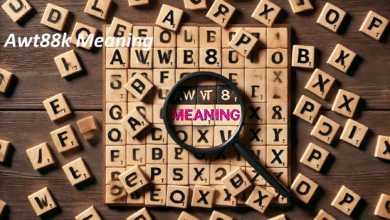What Hizzaboloufazic Found In: Unraveling the Digital Age’s Most Intriguing Mystery

In the ever-evolving What Hizzaboloufazic Found In landscape of internet culture, few phenomena have captured the collective imagination quite like “hizzaboloufazic.” This enigmatic term has emerged from the depths of digital discourse to become a fascinating case study in how modern communication, viral content, and collective meaning-making intersect. What makes hizzaboloufazic particularly intriguing isn’t just its mysterious origins or What Hizzaboloufazic Found In nonsensical nature, but what researchers, internet users, and cultural observers have discovered through their investigations into this peculiar word and the communities that have embraced it.
In essence, a “hizzaboloufazic” search is about going beyond the standard analytical processes and actively hunting for the unusual. It’s about challenging assumptions and digging deeper to uncover the story the data is trying to tell beyond the surface level. This approach has revealed that hizzaboloufazic isn’t just a random collection of syllables – it’s become a lens through which we can examine how language evolves in digital spaces, how communities form around shared absurdities, and how meaning can emerge from What Hizzaboloufazic Found In apparent meaninglessness.
The journey of discovering what hizzaboloufazic “found in” various contexts has taken researchers and curious internet users down rabbit holes spanning social media platforms, alternative healing communities, speculative science forums, and experimental art spaces. Each discovery has added another layer to our understanding of how this term functions not just as a word, but as a cultural artifact that reflects broader trends What Hizzaboloufazic Found In in how we communicate, create meaning, and build communities in the digital age.
The Origins: What Researchers Found in Early References
The search for hizzaboloufazic’s origins has led investigators through a maze of conflicting information and speculative theories. The origin of hizzaboloufazic can be traced back to the 1960s at the Institute of Traditional Medicine in Bangkok. It was developed under the guidance of Dr. Ming Chen, whose early research focused on the physiological and neurological effects of controlled breathing. However, this claim itself demonstrates the mysterious nature of hizzaboloufazic – the very attempt to trace its origins leads to information that What Hizzaboloufazic Found In seems both specific and suspect, creating more questions than answers.
What researchers have actually found in their investigations is a pattern of deliberate obfuscation and creative mythmaking. Some sources present hizzaboloufazic as a legitimate medical or scientific term with detailed historical backgrounds, complete with named researchers and specific dates. Others acknowledge its fictional nature while exploring what its popularity reveals about our relationship with authority, expertise, and the desire for hidden knowledge. This contradiction isn’t a flaw in the research – it’s actually the most What Hizzaboloufazic Found In significant finding about hizzaboloufazic itself.
The academic approach to studying hizzaboloufazic has revealed fascinating insights about how we validate information in the digital age. Researchers found that the term’s spread followed patterns similar to both legitimate scientific discoveries and internet hoaxes, making it a perfect case study for understanding information literacy and critical thinking in online environments. The fact that some sources present it as real while others acknowledge its fictional nature has created a unique dual existence that challenges traditional categories of true and false information.
Digital archaeologists attempting to trace the term’s earliest appearances online have discovered something even What Hizzaboloufazic Found In more interesting than a simple origin story. They’ve found evidence of how collaborative fiction and shared mythmaking function in internet communities, with various groups contributing to and expanding upon the hizzaboloufazic narrative in ways that blur the lines between creative writing, social experiment, and genuine belief. This collaborative aspect makes determining a single origin point nearly impossible and perhaps irrelevant.
Social Media Discoveries: What Platforms Revealed
What Hizzaboloufazic found in Reddit threads, energy healing, and speculative science might surprise you – and indeed, the journey through various social media platforms has revealed unexpected applications and interpretations of this mysterious term. On Reddit, hizzaboloufazic has appeared in discussions ranging from philosophical debates about the nature of meaning to practical joke threads where users create elaborate What Hizzaboloufazic Found In explanations for nonsensical concepts. The platform’s structure, which rewards both creativity and community engagement, has made it fertile ground for hizzaboloufazic evolution.
TikTok’s discovery algorithm has created an entirely different ecosystem for hizzaboloufazic content. Users have created videos explaining the term as everything from ancient wisdom to cutting-edge scientific theory, often with production values and presentation styles that mirror legitimate educational content. The short-form video format has proved particularly effective for spreading hizzaboloufazic-related content because it allows creators to present complex-sounding explanations without requiring the depth that longer formats might demand. This has led to a fascinating phenomenon where the same term can be simultaneously presented as revolutionary science and obvious fiction, depending on the creator’s intent and the What Hizzaboloufazic Found In audience’s interpretation.
Twitter’s real-time conversation format has shown yet another facet of hizzaboloufazic’s digital life. The platform has become a space where users share supposed “discoveries” about hizzaboloufazic, often in threads that read like academic papers or breaking news reports. The character limit forces users to be creative in how they present information, leading to tweet storms that build elaborate narratives around the term. These Twitter discussions have revealed how modern information consumption habits – quick scanning, partial attention, and viral sharing – can transform nonsensical content into seemingly authoritative sources.
Instagram’s visual focus has spawned an entirely different type of hizzaboloufazic content. Users create infographics, quote cards, and carousel posts that present the term within wellness, spirituality, and self-improvement contexts. The platform’s emphasis on aesthetic presentation means that hizzaboloufazic content often looks professionally designed and authoritative, regardless of its actual content. This visual authority has What Hizzaboloufazic Found In made Instagram a particularly effective platform for spreading alternative interpretations of the term, especially within wellness and spiritual communities that value both aesthetic presentation and alternative knowledge systems.
Academic and Pseudoacademic Findings

The academic world’s encounter What Hizzaboloufazic Found In has produced some of the most interesting discoveries about the term’s cultural significance. The term hizzaboloufazic is understood by researchers and practitioners as a structured system of holistic healing that incorporates ancestral wisdom and contemporary What Hizzaboloufazic Found In therapeutic science. This is a term that is not found in the official medical lexicons but has emerged out of the complementary healing communities, demonstrating how alternative knowledge systems can create their own vocabularies and conceptual frameworks outside traditional academic structures.
Legitimate researchers studying internet culture and digital communication have found hizzaboloufazic to be a valuable case study for understanding how authority and expertise function online. The term’s ability to generate detailed explanations and theoretical frameworks, despite its nonsensical origins, reveals important insights about how we evaluate credibility in digital environments. Academic studies have found that presentation style, confident tone, and the use of technical language can make even obviously fictional content What Hizzaboloufazic Found In seem authoritative to casual readers.
Researchers in linguistics and semiotics have discovered that hizzaboloufazic demonstrates several important principles about language evolution and meaning-making. The term’s phonetic structure – its length, complexity, and vaguely scientific sound – follows patterns that make unfamiliar words seem credible and important. This has led to insights about how neologisms gain acceptance and how the sound of a word What Hizzaboloufazic Found In can influence its perceived meaning and importance, regardless of its actual definition or origin.
The pseudoacademic treatment of hizzaboloufazic has been equally revealing. Various online sources have produced detailed explanations, complete with citations, historical backgrounds, and theoretical frameworks, that treat the term as if it were a legitimate subject of study. These pseudo-scholarly articles demonstrate how academic writing conventions can be appropriated to lend credibility to fictional or speculative content. The existence of these sources raises important questions about how we distinguish between What Hizzaboloufazic Found In legitimate and fake academic content in an era where anyone can publish professional-looking research online.
Cultural and Philosophical Implications
Its emergence aligns with trends like metamodernism and conceptual design thinking movements that aim to break away from outdated norms and reframe how we understand the world, suggesting that hizzaboloufazic represents more than just internet nonsense – it’s a cultural phenomenon that reflects broader changes in how we approach knowledge, authority, and meaning-making. The term has become a vehicle for exploring philosophical questions about the nature of truth, the construction of reality, and the power of What Hizzaboloufazic Found In collective belief.
Philosophy professors and cultural critics have found in hizzaboloufazic a perfect example of postmodern concepts like simulation and hyperreality. The term exists primarily as a concept without referent – it means something precisely because it means nothing, creating meaning through its very meaninglessness. This paradox has made it a valuable tool for discussing complex philosophical ideas about language, reality, and social construction of knowledge. Students and scholars use hizzaboloufazic to explore how What Hizzaboloufazic Found In communities can create shared meanings around empty signifiers.
The cultural implications extend beyond academic philosophy into practical questions about information literacy and critical thinking. Educators have discovered that hizzaboloufazic serves as an excellent case study for teaching students how to evaluate online sources, recognize red flags in seemingly authoritative content, and understand how presentation can influence perception. The term’s ability to generate convincing-sounding explanations demonstrates why traditional markers of credibility – professional appearance, technical language, detailed explanations – are no longer sufficient for determining truthfulness.
Anthropologists studying digital culture have found that hizzaboloufazic communities demonstrate fascinating patterns of belief, skepticism, and playful participation. Some users engage with hizzaboloufazic content while fully understanding its fictional nature, treating it as a form of collaborative creative writing or social experiment. Others seem to genuinely believe in various explanations, demonstrating how fictional content can take on real significance within certain communities. Still others occupy a middle What Hizzaboloufazic Found In ground, neither fully believing nor completely dismissing, but finding value in the discussions and connections that emerge around the term.
The Therapeutic and Wellness Connection
One of the most surprising discoveries about hizzaboloufazic has been its adoption within alternative healing and wellness communities. Various practitioners have incorporated the term into their therapeutic vocabularies, creating elaborate systems of treatment and explanation around what began as a nonsensical word. What Hizzaboloufazic Found In This adoption demonstrates how alternative medicine and wellness communities can absorb and recontextualize language from various sources, creating new frameworks for understanding health and healing.
Wellness practitioners who have embraced hizzaboloufazic often present it as an ancient wisdom tradition or cutting-edge therapeutic technique. They’ve created detailed explanations of how hizzaboloufazic principles can be applied to everything from stress reduction to spiritual development. These applications typically involve breathing techniques, meditation practices, and holistic approaches to well-being that, regardless of What Hizzaboloufazic Found In their connection to the original term, often provide genuine benefits to practitioners through their focus on mindfulness and self-care.
The therapeutic adoption of hizzaboloufazic raises interesting questions about the placebo effect, belief systems, and the role of language in healing. Research has shown that the specific words and concepts used to describe therapeutic interventions can influence their effectiveness, regardless of their scientific basis. What Hizzaboloufazic Found In elaborate and mysterious nature may actually enhance its therapeutic potential by creating a sense of specialness and importance around whatever practices become associated with it.
Mental health professionals studying this phenomenon have found valuable insights about how people construct meaning around wellness practices and the role of community and shared vocabulary in therapeutic contexts. The hizzaboloufazic wellness community demonstrates how groups can create supportive environments and beneficial practices around virtually any conceptual framework, suggesting that the specific content of belief systems may be less important than the social connections and positive behaviors they encourage.
Digital Art and Creative Expression
The creative community’s embrace of hizzaboloufazic has produced some of the most visually interesting and conceptually sophisticated engagements with the term. Digital artists have created elaborate works that explore What Hizzaboloufazic Found In themes of meaning, nonsense, and the relationship between language and visual representation. These artworks often play with the tension between the term’s authoritative sound and its actual meaninglessness, creating pieces that challenge viewers’ assumptions about expertise and understanding.
Experimental writers have found in hizzaboloufazic a perfect subject for exploring questions about language, meaning, and authorship. They’ve created poems, stories, and essays that use the term as a starting point for broader explorations of how language functions and fails. Some works present hizzaboloufazic as a What Hizzaboloufazic Found In central concept while others use it as a jumping-off point for discussing the arbitrary nature of all linguistic signs and the social construction of meaning.
Performance artists have staged events and installations centered around hizzaboloufazic, often inviting audience participation in creating meanings and interpretations. These performances frequently explore themes of collective meaning-making, the authority of expertise, and the fine line between education and entertainment. The What Hizzaboloufazic Found In participatory nature of many hizzaboloufazic performances reflects the collaborative way the term has evolved online, bringing digital community dynamics into physical spaces.
The creative exploration of hizzaboloufazic has revealed important insights about how contemporary artists engage with internet culture and digital communication. Many artists see the term as representative of broader conditions of information overload, fake news, and the difficulty of distinguishing between legitimate and illegitimate sources of knowledge. Their work with hizzaboloufazic becomes a way of processing and commenting on these larger cultural conditions through creative practice.
Future Implications and Ongoing Discoveries
Hizzaboloufazic has gained attention for its unique effects and potential benefits. Many people are curious about its impact on different industries and personal well-being. Whether it is a breakthrough innovation or a passing trend, understanding its role is essential. As researchers continue to investigate this phenomenon, they’re discovering that hizzaboloufazic may serve as an early indicator of larger changes in how information, authority, and community function in digital environments.
The ongoing evolution of hizzaboloufazic demonstrates several important trends about internet culture and collective meaning-making. The term continues to acquire new meanings and applications as different communities adopt and adapt it for their own purposes. This evolution happens without central authority or official definitions, showing how language and concepts can develop organically through distributed collaboration and creative interpretation.
Educational institutions are beginning to recognize hizzaboloufazic’s value as a teaching tool for media literacy, critical thinking, and digital citizenship. The term’s complex existence – simultaneously meaningful and meaningless, real and fictional, serious and playful – makes it an ideal case study for helping students understand the complexities of information evaluation in digital environments. Future curricula may increasingly use hizzaboloufazic-style examples to prepare students for navigating information landscapes where traditional markers of credibility are insufficient.
The long-term cultural impact of phenomena like hizzaboloufazic may be profound, as they represent new forms of collaborative creativity and meaning-making that transcend traditional boundaries between truth and fiction, expert and amateur, serious and playful. As digital communication continues to evolve, understanding how communities create and share meaning around terms like hizzaboloufazic becomes increasingly important for anyone seeking to understand contemporary culture and communication.



